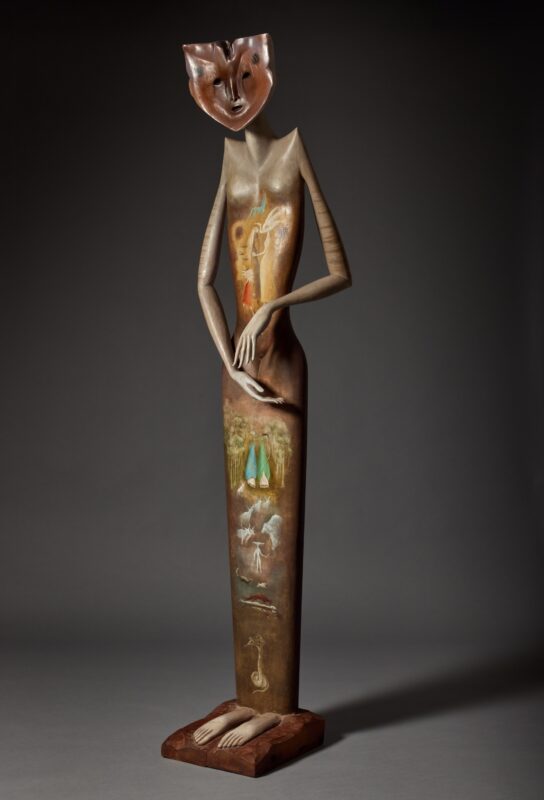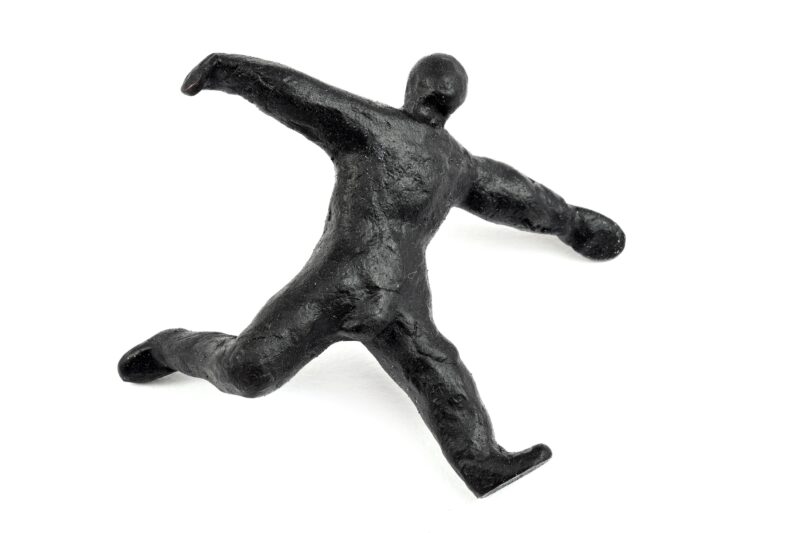
4 RUE DE CRAYÈRES shares a story of connection: to savoir-faire, to Ruinart’s legacy, to hospitality, to art, and to the environment.
If it’s easy to imagine a massive champagne bubble floating above the courtyard of 4 RUE DE CRAYÈRES and carving out the roofline of the newly designed pavilion, it’s because Japanese architect Sou Fujimoto envisioned just that, when he was invited by Ruinart to usher the maison into its next act. The pavilion and surrounding sculpture garden create a conversation between modernity and the legacy of Ruinart in the culmination of a three-year collaborative project between Fujimoto, interior designer Gwenaël Nicolas and landscape artist Christophe Gautrand.
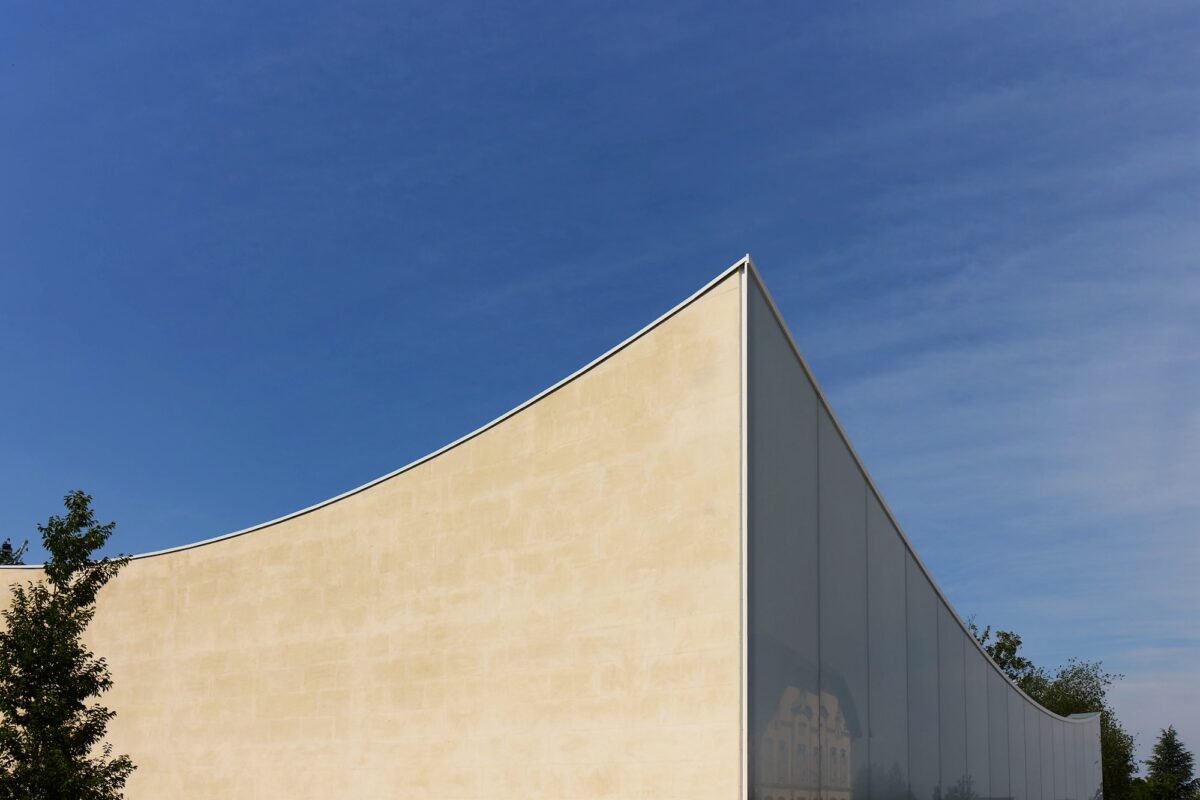
Reminiscent of a champagne flute, the pavilion’s glass facade features a gradient bubble motif that acts as both a window that dapples the interior with sunlight and a portal to the outside, delicately veiling the view of the historic maison across the courtyard. Inside, soft curves and an Atelier Barrois glass installation bring buoyancy.
“The air of the light is around you, the essence of the building,” says Fujimoto, who aimed to achieve a harmony between the new building and the existing one by capturing the “beauty of positive imperfection and quiet curvature”.
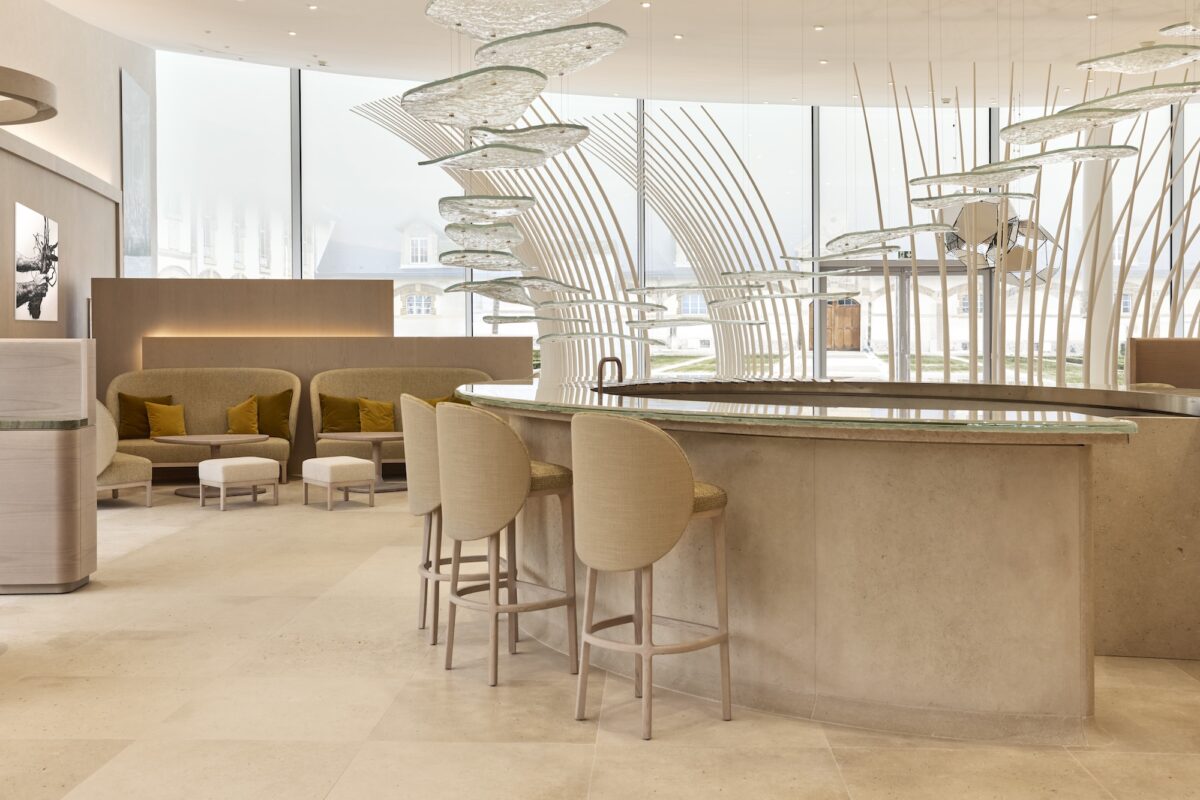
The new space tells a story of connection: to savoir-faire, to Ruinart’s legacy, to hospitality, to art, and to the environment. Nowhere is this more evident than in the sculpture garden, where the artworks are the real sparklers.
Nineteen site-specific sculptures dot the landscape, made meaningful through their connection with the vineyards and the wine making process. “Every artist came to Reims before commencing their work and proposed a specific creation after their visit,” explains Ruinart’s International Director of Arts & Culture Fabien Vallérian, who practices a curiosity driven approach, allowing artists full creative freedom to respond to the setting. “All bring a different message about the environment, the history of champagne, and the history of Ruinart.”
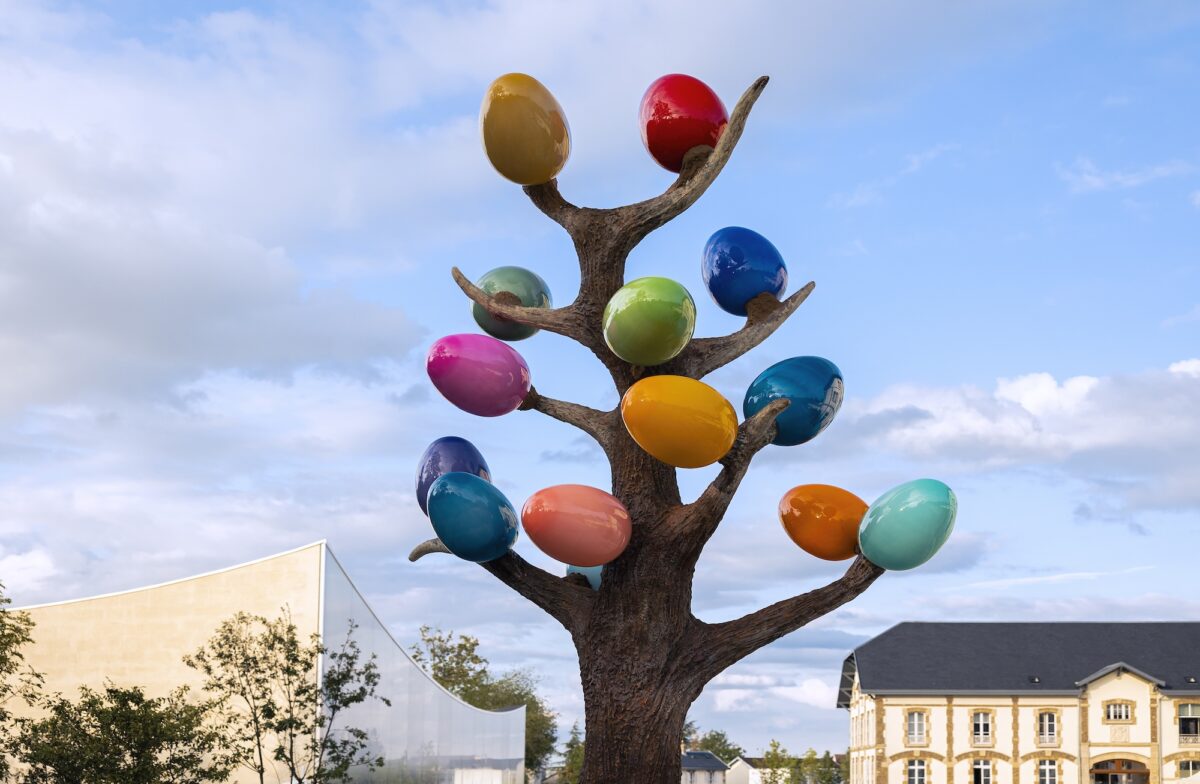
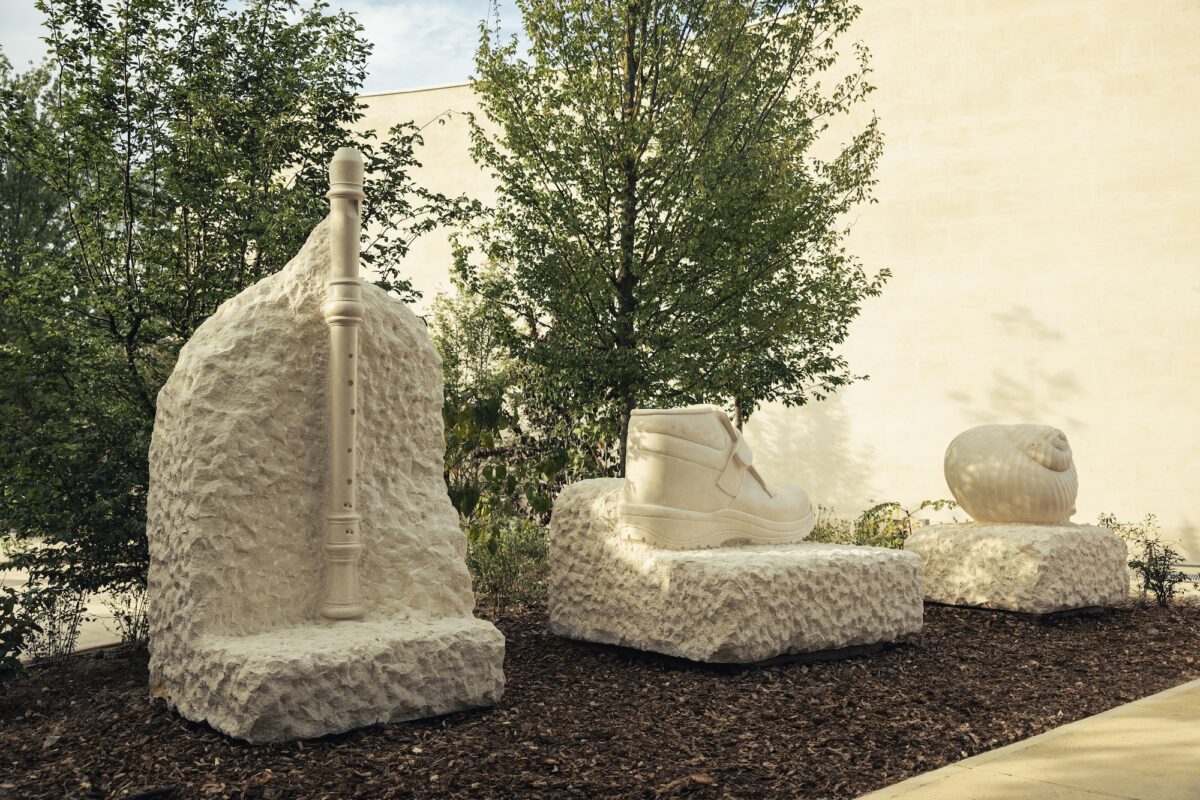
The array of artistic interpretations is evident, from works confronting environmental issues threatening wine-making (exemplified in the plastic fragments in the soil surrounding Pascale Marthine Tayou’s Cerf Contrôle) to the humorous play on words in Dewar & Gicquel’s L’escargot, La Chaussure de Travail et La Flûte à Bec. Yes, that’s a flute of the musical variety referencing the champagne flute.
Through time spent in conversation with the artists, Gautrand shaped the landscape design with a sensibility towards individual artistic interventions. “I collaborated with the artists in a very strong way so that the work and the garden were in total connection. For example, I chose certain trees specifically for the artist Thijs Biersteker or proposed large existing trees so that Lélia Demoisy could create her work. Finally, with the land artist Nils Udo, nature had to be omnipresent. Great care was taken in staging the plants around his work.”

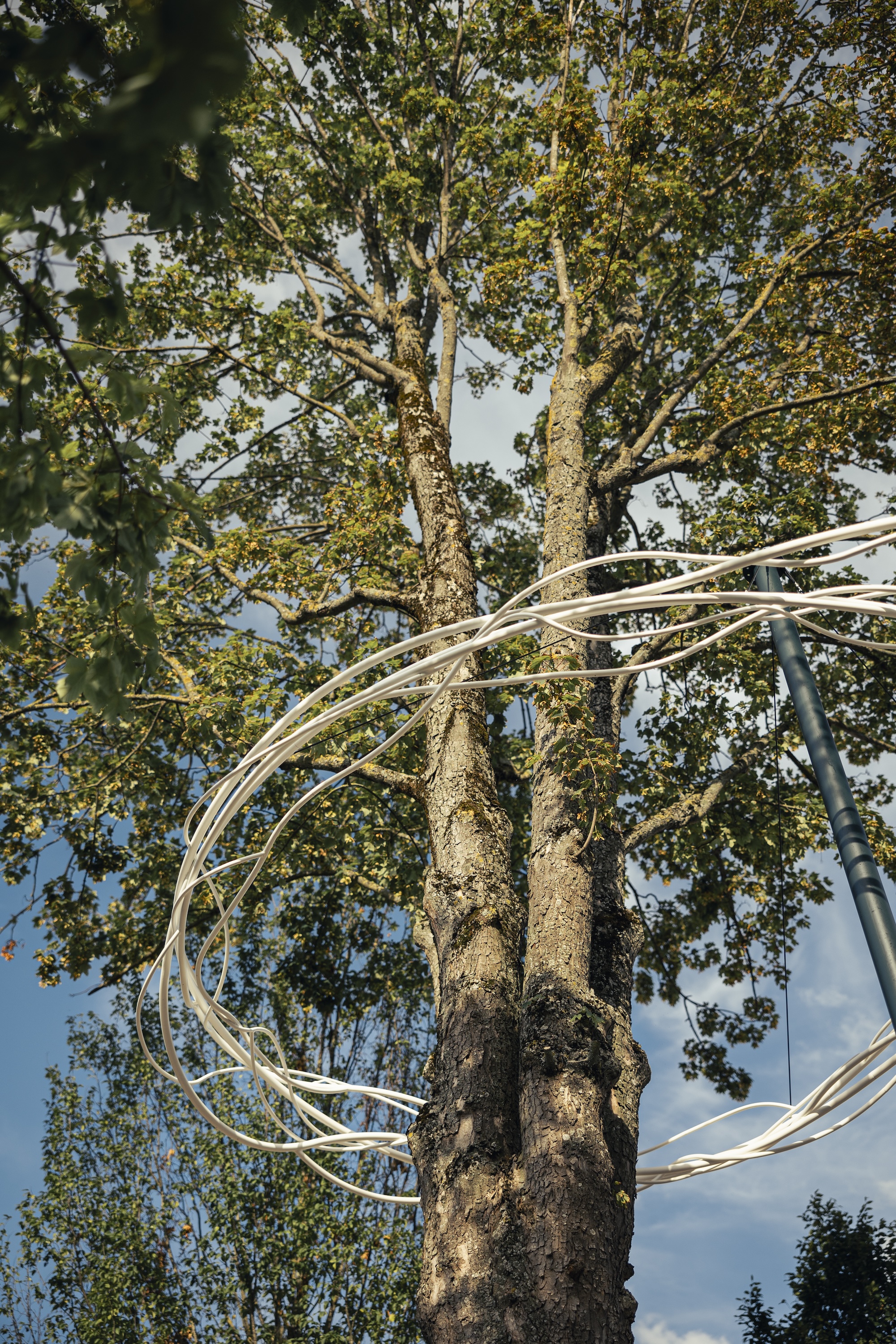
The symbiotic relationship between sculpture and landscape is evidenced throughout the garden. Demoisy’s suspended infinity knot in Between Us (Entre Nous) beckons viewers to experience “our bodies in front of the bodies of the trees”. Thijs Biersteker draws a parallel between the sap flow of trees and the blood flowing through our own veins in Xylemia, which relies on real time data to visualize the invisible veins of the tree on glowing LED panels.
Elsewhere in the garden, artists engage with the out-of-sight network of chalk caves (crayères) beneath our feet—established as cellars in the 18th century by the Ruinart family.
The UNESCO protected crayères, now synonymous with Ruinart, formed millions of years ago underwater. Drawing upon this geological history, Tomoko Sauvage and Elias and Yousef Anastas use micro-air bubbles from chalk stones in sub-aqueous recordings for Serpentine Bell. Step inside Côme di Meglio’s Le Chant des Origines for a rare sightline into the subterranean world—the artwork happens to be sitting atop a crayère.
The sculpture garden is a celebration of the rich heritage of Ruinart, a deeper look at our relationship with the natural world, and an invitation into conviviality—best enjoyed with a glass of champagne. For Gautrand, relationships with the artists brought the landscape to life. “I have stories with each artist which makes this garden unique.”
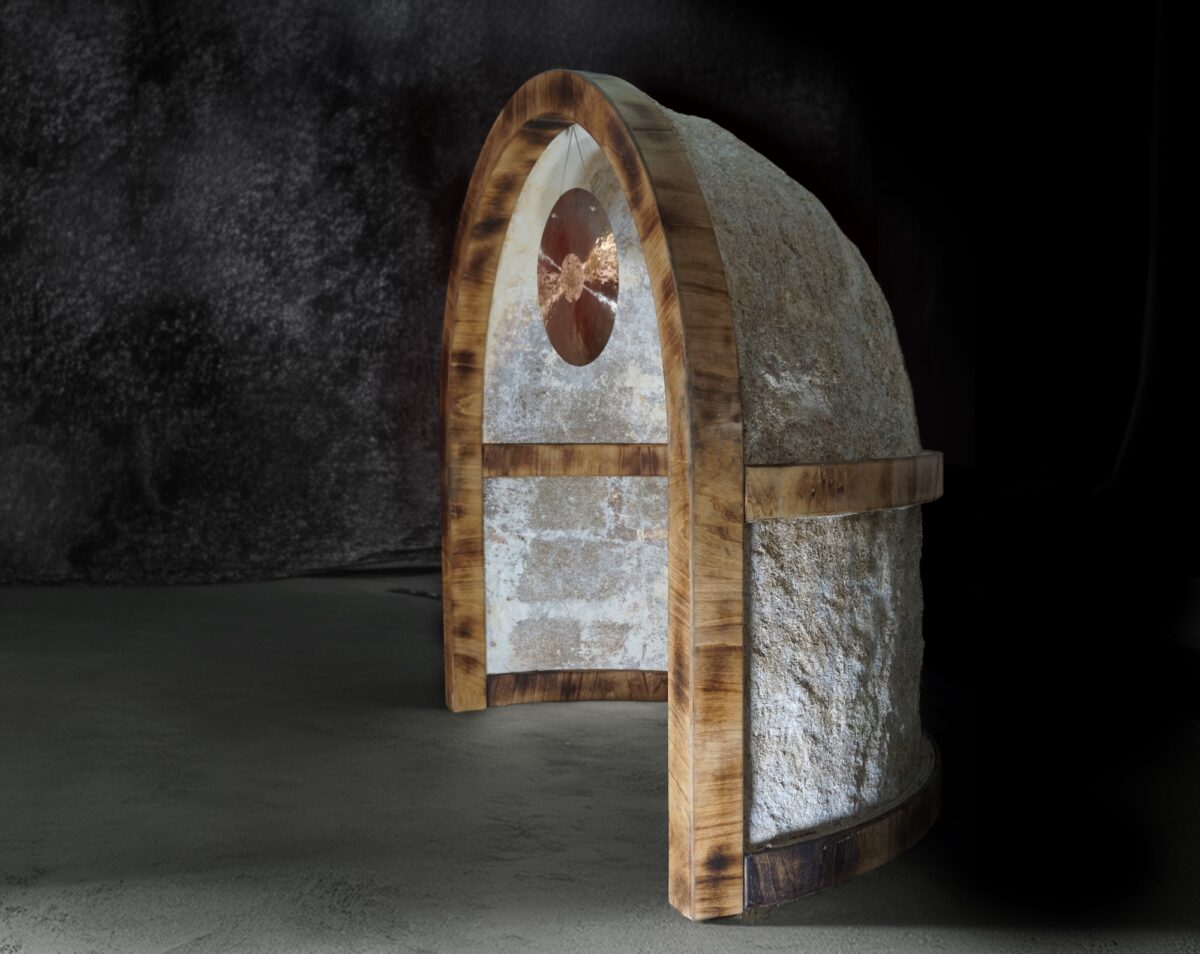
The 7000m2 gardens at 4 RUE DE CRAYÈRES are now open and freely accessible to the public. Ruinart.com
